10 Rare Mantel Clocks That Have Stood the Test of Time
Known for their elegant designs and practical use, mantel clocks have been a part of home décor for centuries. These timepieces first gained popularity in the 1700s, often sitting atop mantels and fireplaces in living rooms. Over the years, some have become rare finds, cherished for their beauty and craftsmanship. Whether crafted from delicate wood, intricate brass, or polished marble, these clocks have stood the test of time. If you’re passionate about vintage pieces, rare mantel clocks offer a fascinating glimpse into history and design.
This post may contain affiliate links, which helps keep this content free. Please read our disclosure for more info.
French Louis XVI Ormolu Mantel Clock
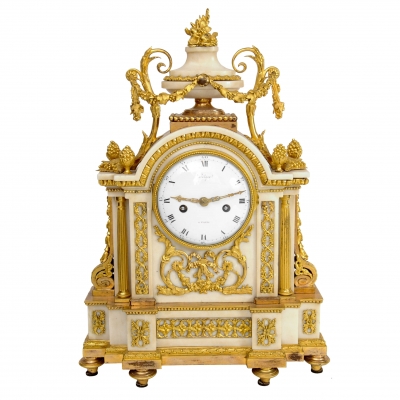
This exquisite French Louis XVI ormolu mantel clock, dating back to around 1780, showcases the elegance of the period. Crafted in Paris, it features intricate gilt bronze detailing and a porcelain dial. Its rarity stems from the high-quality materials and craftsmanship typical of the era. Such pieces are highly sought after by collectors of French antiques. Depending on condition and provenance, its value can range from $8,000 to $12,000.
Collectors prize this clock not only for its aesthetic appeal but also for its historical significance. The ormolu technique, involving gilded bronze, was a hallmark of French luxury during the late 18th century. Owning such a piece offers a tangible connection to the opulence of the French court. Its enduring beauty and craftsmanship make it a timeless addition to any collection.
Seth Thomas Hecla Mantel Clock
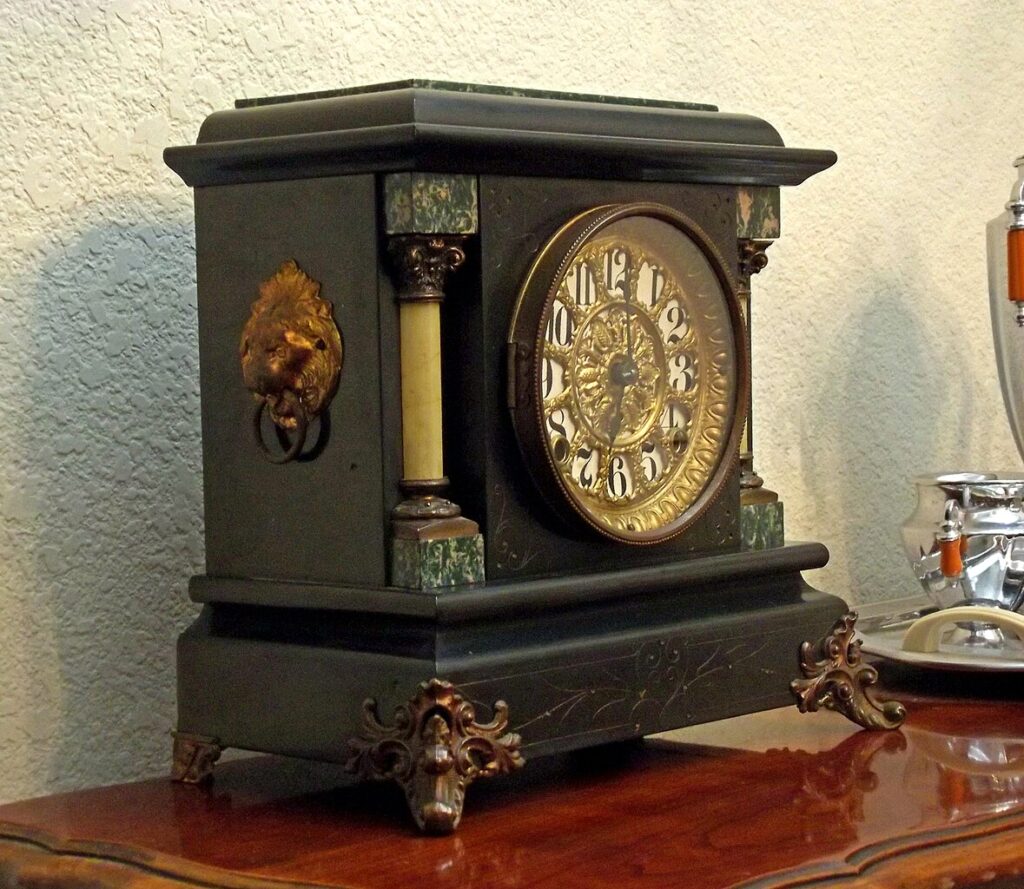
The Seth Thomas Hecla mantel clock, produced in 1884, is a notable example of American clockmaking. Its design features a polished walnut case with brass accents. The clock’s rarity is attributed to its limited production and distinctive design. Collectors often value it for its historical importance in American horology. Depending on condition, its market value can be around $1,000 to $1,500.
This clock represents the craftsmanship of Seth Thomas, a renowned American clockmaker. The Hecla model stands out for its elegant design and reliable timekeeping. Owning this piece offers insight into the evolution of American clockmaking in the late 19th century. Its enduring appeal continues to attract collectors interested in vintage American timepieces.
Ansonia Arabia Mantel Clock
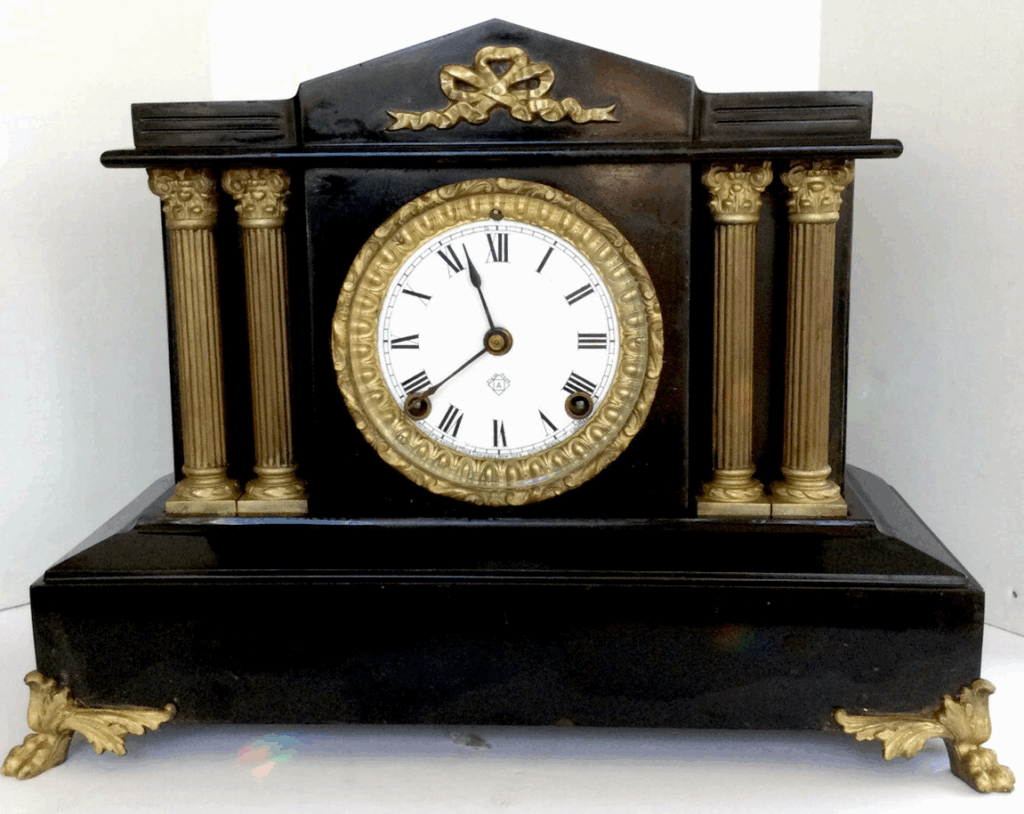
The Ansonia Arabia mantel clock, dating back to the 1880s, is a striking example of Victorian-era design. Its ornate cast iron case is adorned with intricate patterns and a rich patina. The clock’s rarity is due to its elaborate design and the limited number produced. Collectors appreciate it for its bold aesthetic and historical context. Its value typically ranges from $500 to $800, depending on condition.
This clock reflects the Victorian fascination with exotic motifs and elaborate craftsmanship. The Arabia model’s detailed design showcases the era’s attention to decorative arts. For collectors, it offers a glimpse into the opulence and design trends of the late 19th century. Its distinctive appearance makes it a standout piece in any collection.
Waterbury Gingerbread Mantel Clock
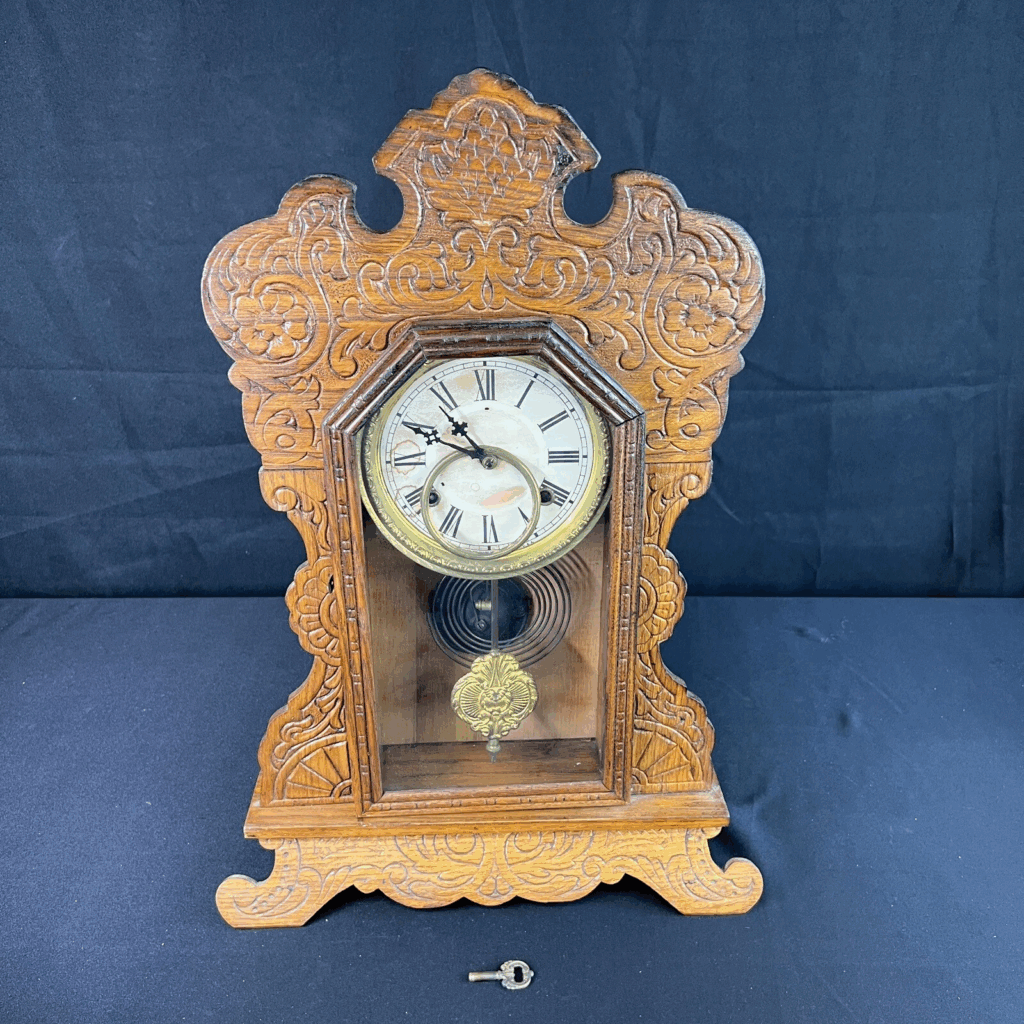
The Waterbury Gingerbread mantel clock, produced in the late 1800s, is a classic example of American clock design. Its carved wooden case features intricate detailing, reminiscent of gingerbread trim. The clock’s rarity is linked to its distinctive design and the limited production during its time. Collectors value it for its craftsmanship and historical significance. Its market value can range from $200 to $400, depending on condition and specific model.
This clock represents the craftsmanship of the Waterbury Clock Company, known for producing quality timepieces. The Gingerbread model stands out for its decorative woodwork and reliable movement. Owning this piece provides insight into American clockmaking traditions of the late 19th century. Its enduring popularity among collectors underscores its lasting appeal.
Junghans Art Deco Mantel Clock
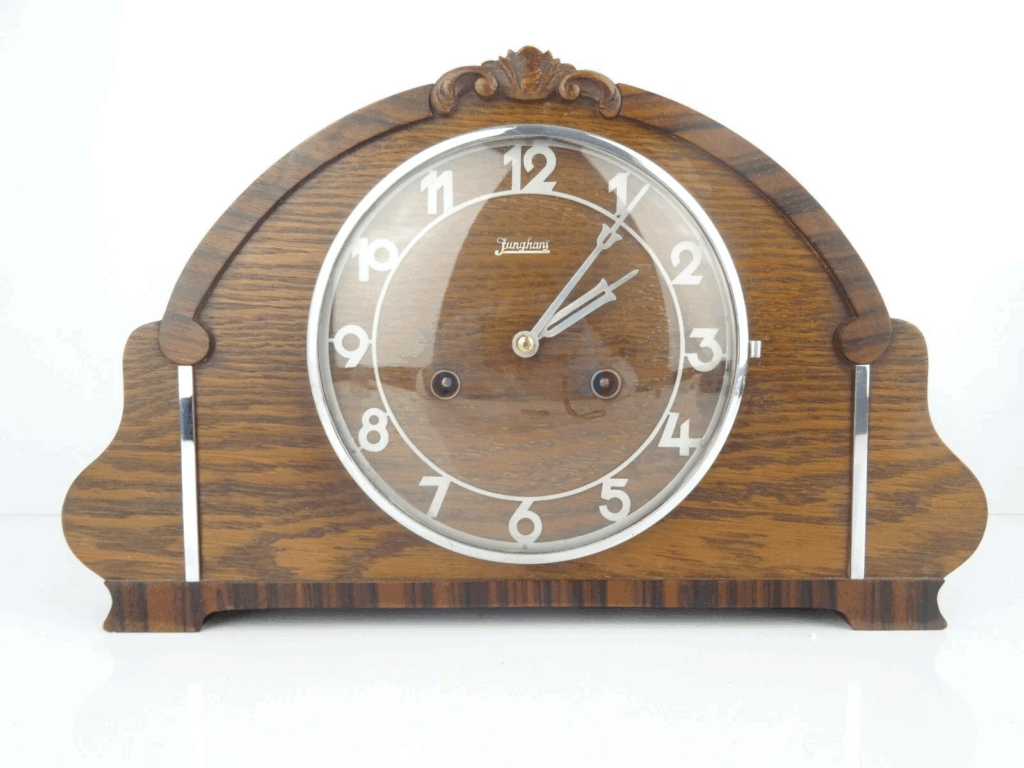
The Junghans Art Deco mantel clock, crafted in the 1930s, exemplifies the sleek lines and geometric shapes characteristic of the Art Deco period. Made in Germany, it features a chrome-plated case with a minimalist design. Its rarity is attributed to the limited production of such designs during the era. Collectors appreciate it for its modern aesthetic and historical context. Its value typically ranges from $300 to $500, depending on condition and design specifics.
This clock reflects the design innovations of the Art Deco movement, which emphasized modernity and luxury. Junghans, a renowned German clockmaker, produced timepieces that combined functionality with artistic design. Owning this clock offers a glimpse into the design trends of the early 20th century. Its distinctive style continues to attract collectors interested in vintage design.
Chelsea Ship’s Bell Mantel Clock
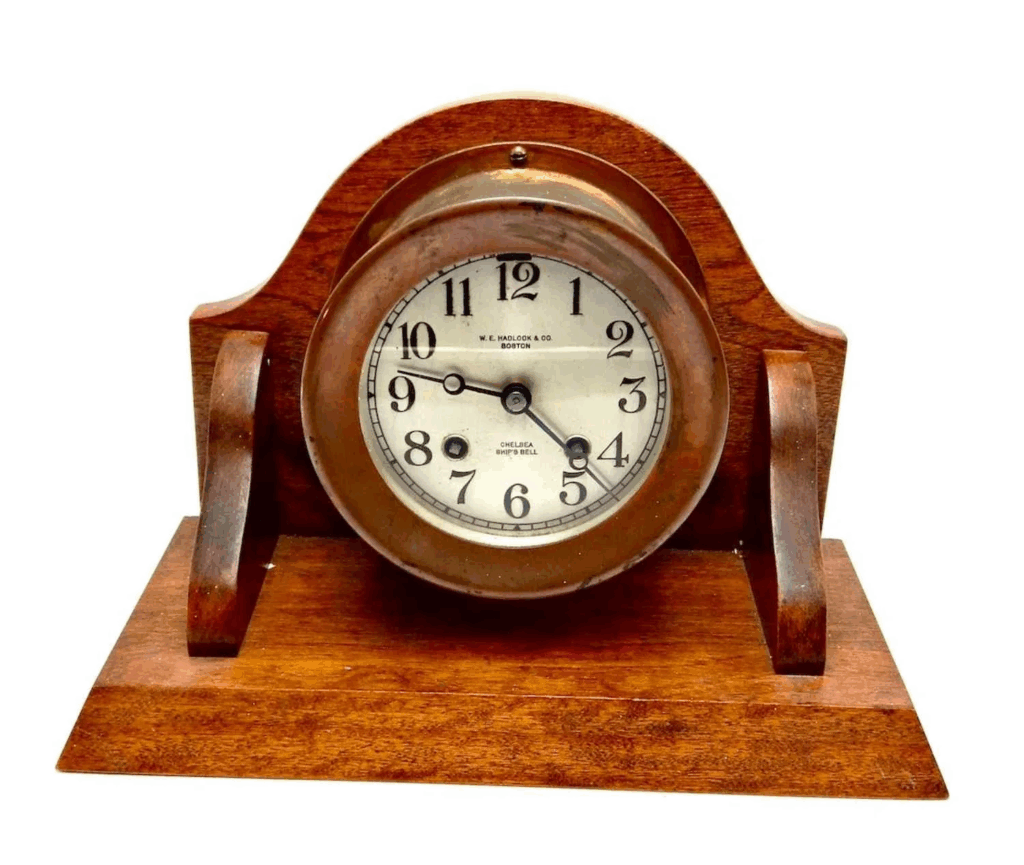
The Chelsea Ship’s Bell mantel clock, produced in the 1920s, is a notable example of nautical-themed timepieces. Crafted in the United States, it features a polished brass case and a distinctive ship’s bell chime. Its rarity is attributed to its specialized design and limited production. Collectors appreciate it for its unique chime and maritime connection. Its value typically ranges from $1,000 to $1,500, depending on condition and provenance.
This clock reflects the craftsmanship of Chelsea Clock Company, renowned for producing high-quality timepieces. The Ship’s Bell model is designed to chime every half hour, mimicking the bells on ships. Owning this piece offers a connection to maritime history and tradition. Its distinctive design and chime continue to captivate collectors.
Japy Freres Gilt Bronze Mantel Clock
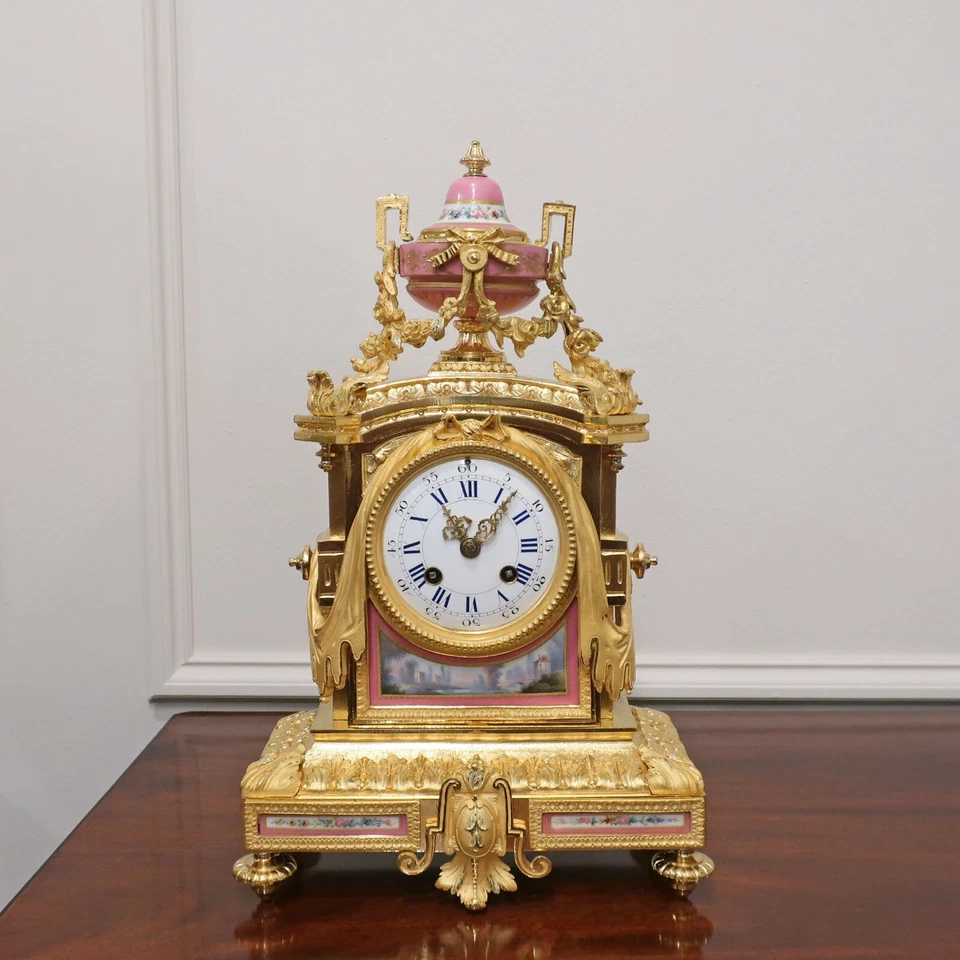
The Japy Freres gilt bronze mantel clock, circa 1850, is a masterpiece of French horology. Crafted in France, it features intricate gilt bronze detailing and a porcelain dial. Its rarity stems from the high-quality materials and craftsmanship typical of the period. Collectors value it for its historical significance and artistic design. Its market value can range from $5,000 to $7,000, depending on condition and provenance.
This clock represents the artistry of Japy Freres, a renowned French clockmaking company. The gilt bronze finish and porcelain dial exemplify the opulence of mid-19th century France. Owning this piece offers a glimpse into the luxury and craftsmanship of the era. Its enduring beauty makes it a prized addition to any collection.
Howard Miller Westminster Mantel Clock
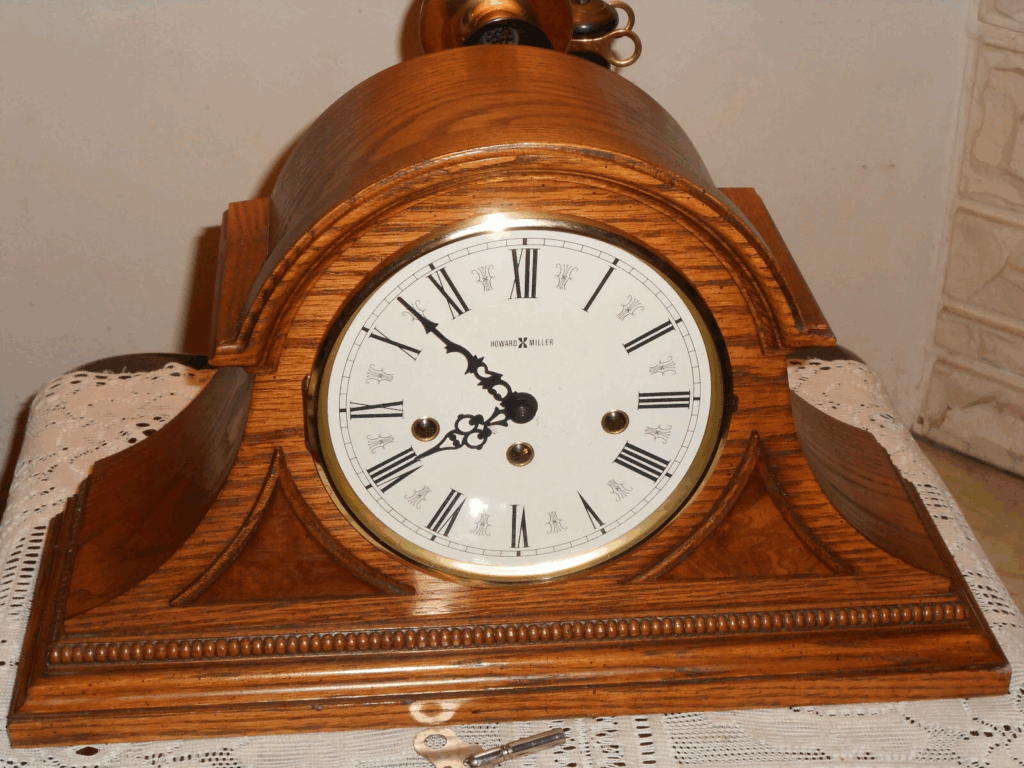
The Howard Miller Westminster mantel clock, produced in the 1960s, is a classic example of mid-20th century design. Made in the United States, it features a wooden case with a walnut finish and a Westminster chime. Its rarity is due to its distinctive design and the limited production during its time. Collectors appreciate it for its craftsmanship and historical context. Its value typically ranges from $300 to $500, depending on condition and specific model.
This clock reflects the design sensibilities of the 1960s, combining traditional craftsmanship with modern aesthetics. Howard Miller, a renowned American clockmaker, produced timepieces known for their quality and design. Owning this piece provides insight into the evolution of American clockmaking in the mid-20th century. Its enduring appeal continues to attract collectors interested in vintage timepieces.
Sessions Cottage Mantel Clock
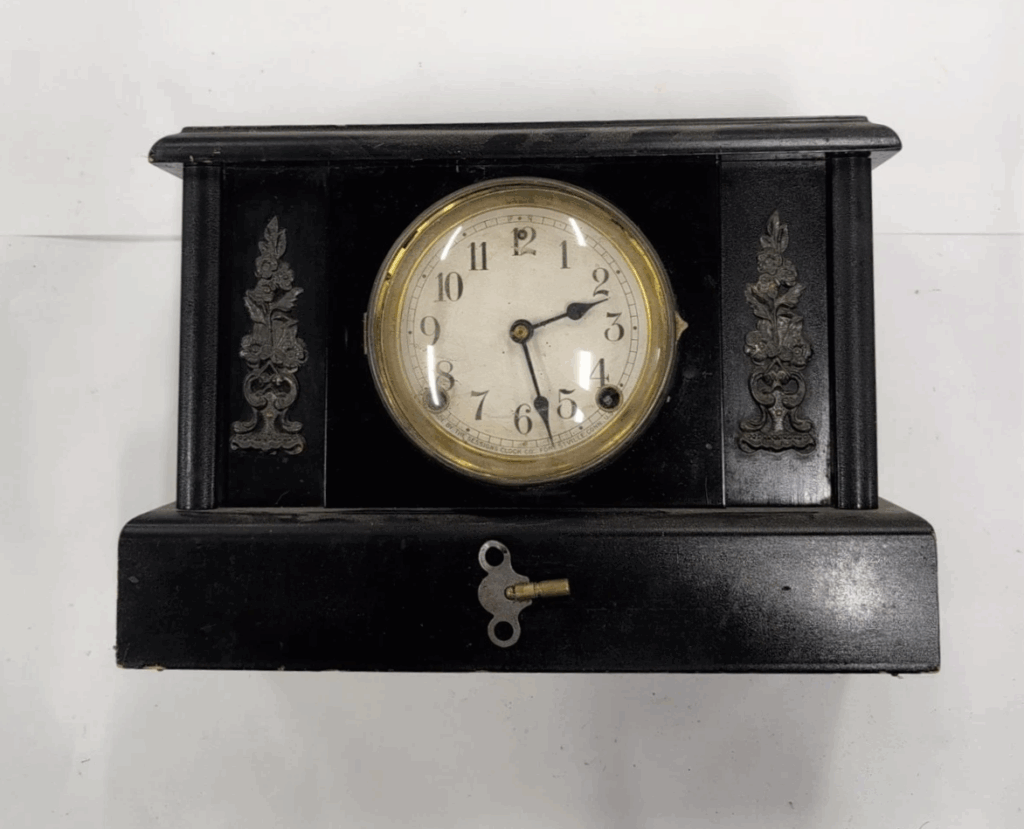
The Sessions Cottage mantel clock, crafted in the 1910s, is a charming example of early 20th-century design. Featuring a wooden case with simple yet elegant carvings, this clock reflects the American Craftsman style that was popular during the time. Its rarity is attributed to its intricate yet accessible design and the limited number of units produced. These clocks are valued between $200 and $400, depending on their condition and specific model. Collectors often appreciate the Cottage clock for its historical relevance and timeless aesthetic.
The Sessions Clock Company was a major American clockmaker known for producing high-quality timepieces during the late 19th and early 20th centuries. The Cottage mantel clock, with its warm wood finish and simple lines, captures the spirit of the Arts and Crafts movement. As with many other vintage clocks, collectors prize this model for its sturdy build and smooth ticking. Owning this piece offers a connection to the everyday elegance of early 20th-century life. Its appeal endures due to both its craftsmanship and the nostalgic warmth it adds to any collection.
New Haven Linden Mantel Clock
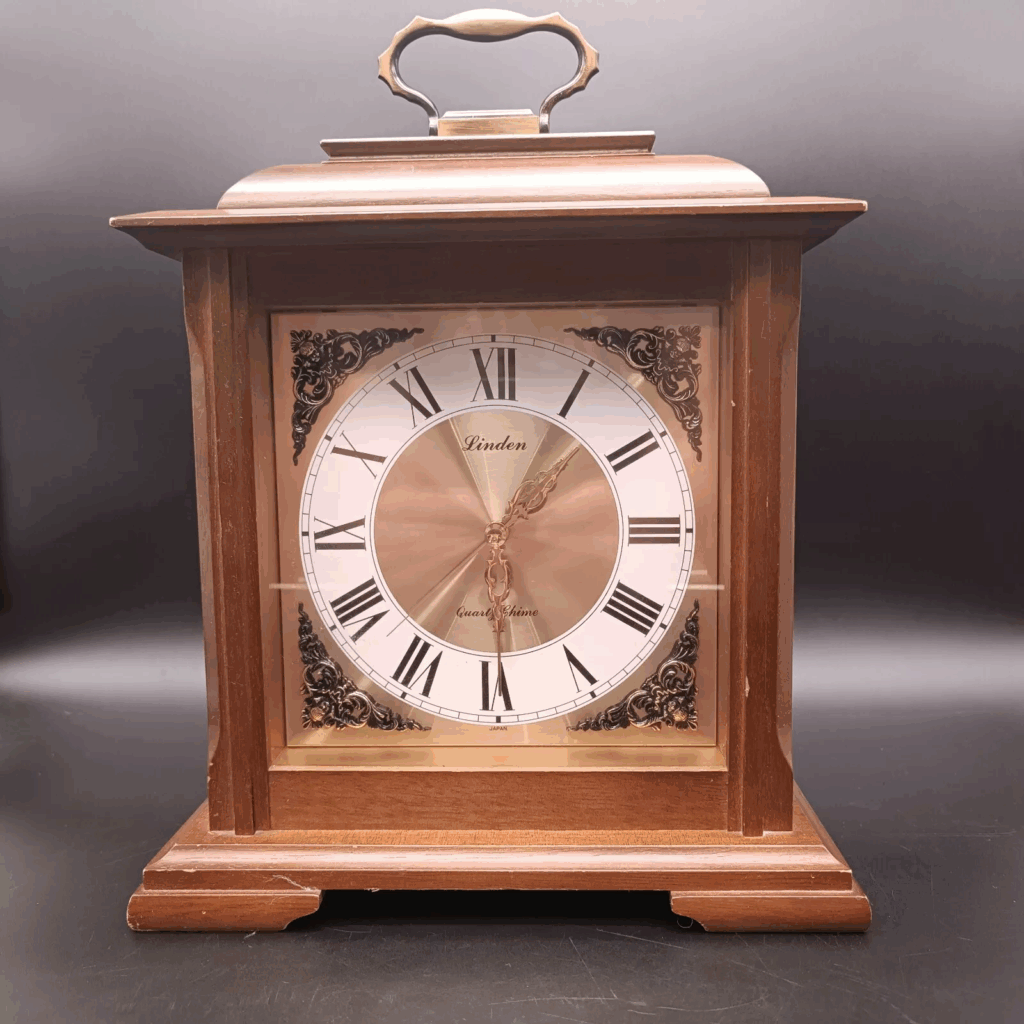
The New Haven Linden mantel clock from the early 1900s is a beautiful piece that combines elegance with functionality. Its wooden case and Roman numeral dial give it a classic, timeless appeal. The rarity of this clock lies in its refined craftsmanship and the limited availability of the Linden model. Depending on condition, this clock can fetch anywhere from $250 to $600 at auctions. Its clean design and smooth chime continue to attract collectors of American timepieces.
New Haven Clock Company, known for its fine clocks, produced this model to meet the growing demand for quality, affordable timepieces in the 1900s. The Linden features a polished wood case that enhances its classic appeal, making it a prized piece for collectors. Despite being produced in large quantities, the Linden is rare in mint condition, adding to its collectible status. The clock’s beauty and reliable functionality ensure that it stands the test of time, both in terms of design and popularity. Collectors enjoy the history behind New Haven clocks, which remain some of the best-loved American-made timepieces.
This article originally appeared on Avocadu.
